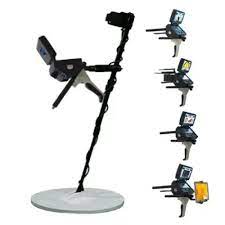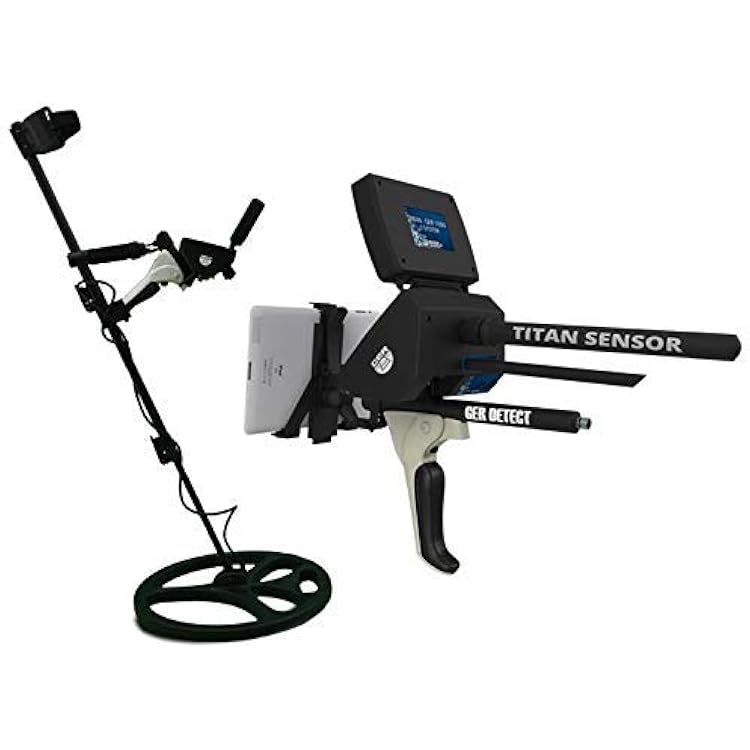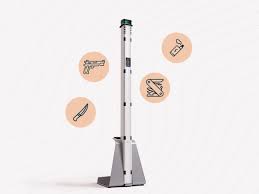3D metal detectors have emerged as a groundbreaking technology in the field of security. Revolutionizing Security: The Power of 3D Metal Det...
3D metal detectors have emerged as a groundbreaking technology in the field of security. Revolutionizing Security: The Power of 3D Metal Detectors explores the game-changing potential of these advanced detection systems. With their ability to provide detailed, three-dimensional images of objects concealed on a person or within a bag, 3D metal detectors have proven to metal detector made in germany be an invaluable tool in enhancing security measures. This article delves into the capabilities and impact of 3D metal detectors on revolutionizing security protocols.
Revolutionizing Security: The Power of 3D Metal Detectors is a technological advancement in the field of security screening. Traditional metal detectors primarily detect metal objects based on their electromagnetic properties, leaving them vulnerable to potential threats such as non-metallic weapons or explosives. 3D metal detectors utilize advanced imaging technology to provide a three-dimensional view of scanned objects, geo detector allowing for more accurate and thorough screening. This innovation has the potential to significantly enhance security measures in various settings, including airports, public events, and high-security facilities. By providing a more comprehensive solution for threat detection, 3D metal detectors have the power to revolutionize security protocols and improve overall safety.
Revolutionizing Security: The Power of 3D Metal Detectors is a significant advancement in security technology. These detectors are capable of providing a three-dimensional view of scanned objects, allowing for more accurate and thorough screening in comparison to traditional metal detectors. By leveraging advanced imaging technology, 3D metal detectors have the potential to detect non-metallic threats such as explosives or non-metallic weapons, enhancing security measures in various settings such as airports, public events, and high-security facilities. This innovative approach holds promise for revolutionizing security protocols and improving overall safety.
Exploring the Technology Behind 3D Metal Detectors
germany gold detector

3D metal detectors use advanced technology to accurately detect and image metallic objects buried underground. They utilize a combination of electromagnetic waveforms and advanced signal processing algorithms to create 3D images of the subsurface, allowing users to visualize the size, shape, and depth of detected objects. These detectors often incorporate multiple operating frequencies and polarizations to improve detection capabilities and reduce false alarms. Additionally, they may utilize advanced software for data analysis and visualization, further enhancing their performance and usability. As a result, 3D metal detectors have become an invaluable tool for archaeological surveys, utility mapping, and military applications.
Benefits of Using a 3D Metal Detector for Surveying

- 3D metal detectors provide highly accurate and detailed data on buried metallic objects, allowing for more precise surveying results. - They can detect and map underground utilities, pipes, cables, and other metallic structures with greater efficiency and speed, reducing the time and labor required for surveying tasks. - The ability to visualize the detected objects in three dimensions helps to avoid potential conflicts or hazards during construction or excavation projects, leading to improved safety and cost savings. - 3D metal detectors are designed to be portable and easy to use, making them suitable for a wide range of surveying applications in various terrains and environments. - By providing comprehensive information about the location, depth, and size of buried metallic objects, 3D metal detectors contribute to more informed and accurate decision-making in construction, infrastructure development, and land development projects.
The Evolution of 3D Metal Detection Technology

The evolution of 3D metal detection technology has been driven by the need for more accurate and reliable detection of metallic objects in various industries. Traditional 2D metal detectors have limitations in terms of accuracy and sensitivity, especially in complex environments. The introduction of 3D metal detection technology has allowed for improved detection capabilities, enabling better identification and localization of metallic objects. By using advanced algorithms and sensor systems, 3D metal detectors are able to create detailed 3D maps of the scanned area, making it easier to distinguish between different types of metals and reduce false alarms. Furthermore, the evolution of 3D metal detection technology has led to the development of more compact and portable devices, making it easier to deploy in different settings such as security checkpoints, industrial facilities, and archaeological excavations. Additionally, the integration of artificial intelligence and machine learning has further enhanced the capabilities of 3D metal detection technology, allowing for real-time analysis and decision-making. Overall, the evolution of 3D metal detection technology has significantly improved the accuracy, sensitivity, and versatility of metal detection systems, making them essential tools in various industries and applications.
How to Choose the Right 3D Metal Detector for You
When choosing a 3D metal detector, it's important to consider what type of metal detecting you will be doing and the specific features you need. Some factors to consider include the size and weight of the detector, the depth and range of detection, the frequency of operation, and any additional features such as discrimination settings or ground balance. It's also important to consider the terrain and conditions in which you will be using the detector, as well as your budget. Research different models and read reviews to find the best 3D metal detector for your needs.
Understanding the Science of 3D Metal Detection
Understanding the science of 3D metal detection involves studying the principles of electromagnetic induction and the behavior of metal objects in varying magnetic fields. The technology utilizes 3D imaging to accurately detect and locate metal objects in various environments and applications, such as security screening, industrial inspection, and archaeological surveys. By analyzing the interactions between metal objects and magnetic fields, 3D metal detection systems can provide detailed information about the size, shape, and composition of detected items, leading to improved accuracy and reliability in metal detection procedures. Additionally, advancements in signal processing and data analysis techniques have further enhanced the capabilities of 3D metal detection, making it an indispensable tool in a wide range of industries and fields.
Enhancing Archaeological Discoveries with 3D Metal Detectors
3D metal detectors are being used to enhance archaeological discoveries by providing more accurate and detailed information about the objects buried underground. These devices use advanced technology to create three-dimensional images of buried artifacts, giving archaeologists a better understanding of their size, shape, and location. This allows for more precise excavation and preservation of historical sites. Additionally, 3D metal detectors can detect smaller objects and materials that may have been missed by traditional metal detectors, providing a more comprehensive view of the archaeological landscape. Overall, these tools are revolutionizing the field of archaeology by improving the efficiency and accuracy of discoveries.
Improving Industrial Safety with 3D Metal Detection Systems
. Improving industrial safety with 3D metal detection systems involves implementing advanced technology to identify and locate metal contaminants within manufacturing processes. These systems utilize 3D imaging and detection capabilities to accurately pinpoint the presence of metals within production lines, helping to prevent equipment damage, product contamination, and potential safety hazards. By incorporating 3D metal detection systems into industrial operations, companies can enhance overall workplace safety and ensure product quality and integrity.
Exploring the Applications of 3D Metal Detectors in Mining
Exploring the applications of 3D metal detectors in mining involves using advanced technology to improve the efficiency and accuracy of detecting and identifying metal deposits. These detectors can provide detailed images and data of underground geological structures, helping mining companies locate and extract precious metals with greater precision. They also aid in minimizing disruptions to the environment by reducing the need for extensive excavation. Additionally, 3D metal detectors can improve safety by identifying potential hazards such as unexploded ordnance or other buried metallic objects. Overall, their application in mining has the potential to revolutionize the industry's exploration and extraction processes.
Challenges and Limitations of 3D Metal Detection Technology
Challenges and limitations of 3D metal detection technology include the need for advanced and expensive equipment, which can be a barrier for smaller businesses or organizations. Additionally, the technology may struggle to accurately detect metal objects within complex environments, such as those with a high volume of irrelevant metallic items or dense materials. Furthermore, the accuracy of 3D metal detection can be affected by interference from other electromagnetic sources, making it difficult to rely solely on this technology in certain settings. Additionally, the process of interpreting and analyzing the 3D data generated by the technology may require specialized expertise, which could pose a challenge for some users.
Maximizing Efficiency with 3D Metal Detectors in Construction
3D metal detectors in construction offer several advantages for maximizing efficiency. These detectors provide precise and accurate identification of metallic objects in the ground, allowing construction teams to plan and execute their excavation and drilling processes with greater efficiency and safety. By using 3D metal detectors, construction crews can avoid costly and time-consuming delays caused by hitting unexpected underground obstacles. Additionally, these detectors can help minimize the risk of damage to underground utilities and infrastructure, saving time and money in the long run. Overall, the use of 3D metal detectors in construction can streamline the excavation process and improve overall project efficiency.
